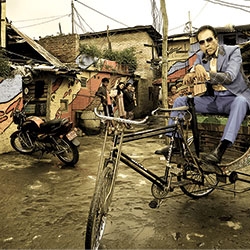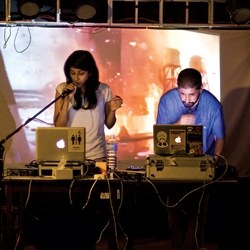Dive off a plane with the scenic Himalayas in the background. The only clincher; it will set you back by 35,000 USD
Skydiving from Everest has been operational since 2008 and every year tandem and solo jumps are made from above the Himalayas. The tagline of Explore Himalayas, the company operating the adventure sports, reads ‘Adventure that Beats All Adventures.’ Without a shadow of a doubt, it is so.
To paint a scenario, imagine dropping off from a AS350 B3 Helicopter from the height of 29500 feet, free falling while enjoying an unquotable view of the Himalayas. No wonder, CNN has ranked it as No. 8 out of ‘50 best Adventure Events’ organized throughout the world.
Till date, a total of 96 from Nepal and all over the world have completed Everest skydiving, solo or tandem. In 2012, they added new heights to their already exciting venture by bringing into operation the AS 350 B3 Helicopter, which not only performed drops over Syangboche Airport but also made several jumps over a new drop zone at Amadablam Base Camp (15000 feet) which are registered as the highest drop zones in the world. The whole experience also allows you to visit the Sagarmatha National Park which should also be considered a great visit on its own.
Now the instant stumbling block isn’t the fact that you will jumping off a chopper plummeting from thousands of feet, it is the fact that a solo jump is priced at 35,000 USD and a tandem jump at 25,000 USD! The prices are astronomical, even for the most extravagant and something that Menuka Gurung, sales executive officer at Explore Himalayas duly acknowledges. “We agree that a whopping price is tagged with event. However, it is justifiable on the ground that the event is highly technical and event of such calibre and stature needs exceptionally qualified team and logistics. We are getting great number of enquiries from all over the globe and a decent group of visitors every year,” she says.
The sheer preciseness required for the whole project to be safe is what the fee is invested in. But what of our health and personal fitness? Surely something as momentous as a skydive will require some very sturdy human beings? Gurung clarifies, “Anyone with a modest fitness level can take part in the event. For solo dive, one should be a B+ license holder from internationally recognized parachute association.”
Now if the price tag is still tugging at your heart strings, it certainly ends on a very good note: “Our goal is to develop Nepal as an adventure destination for high end clients. However, we are also looking into the project more liberally and trying to make the adventure accessible to other adventure enthusiasts including Nepalis. We launched promo jumps in Pokhara last year, which received positive response from the medias and Nepali adventure seekers alike. We had test jumps in Manang as well. The metamorphosis is still going on.”
By The Numbers
A solo jump will cost you a mammoth 35,000 dollars where as a tandem jump with a trainer 25,000.
The opening altitude for your main parachute, between 16,000 and 18,000 feet.
All The Safety
The helmet laced with an oxygen mask.
High altitude jump goggles and vest as well as a standard military spec javelin container with a rip cord.
Neptune audible (yes audible!) altimeter telling you of your descent, as you descend.
For more information, visit www.everest-skydive.com.











